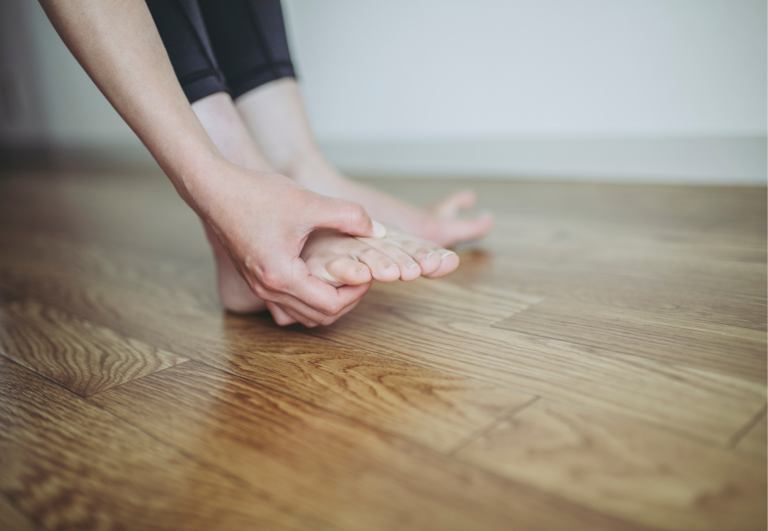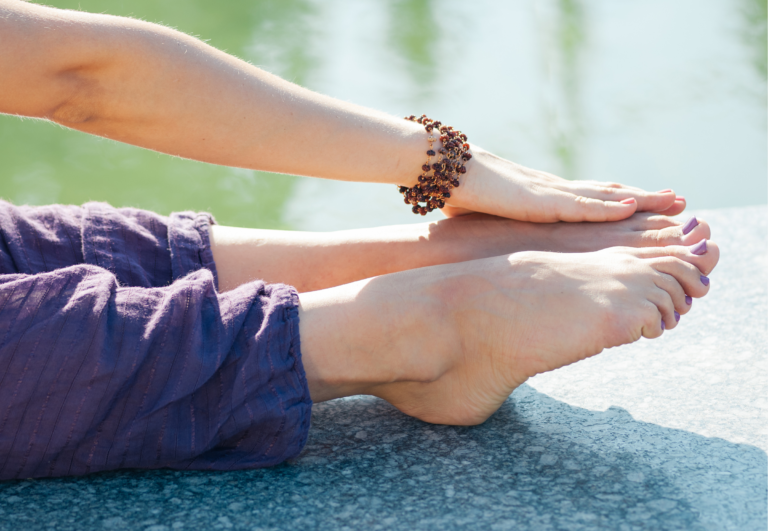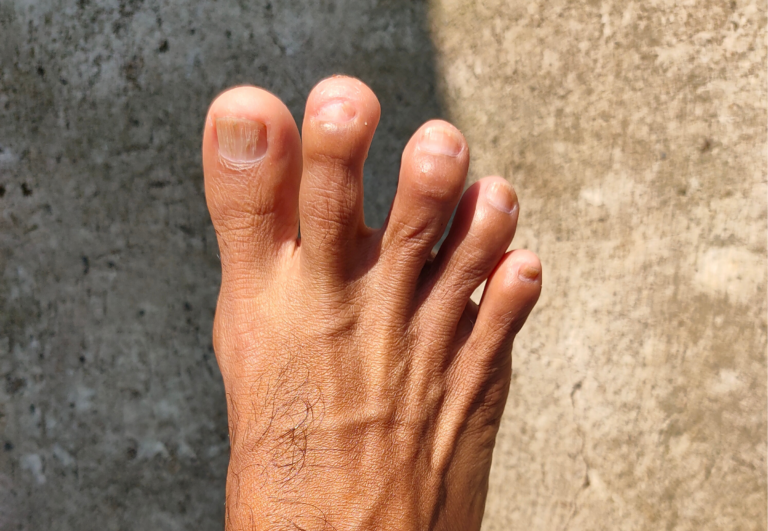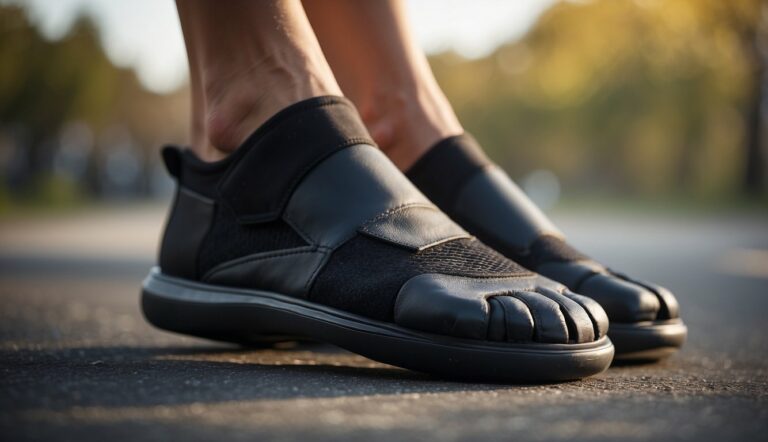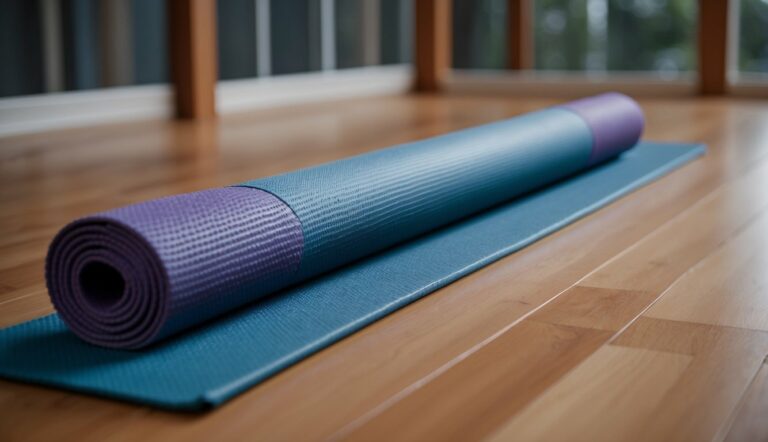Toe Separation Exercises: Improve Foot Health and Flexibility
I’ve always been a firm believer in the importance of foot health and the benefits of toe separation exercises. These exercises aren’t just for flexibility and mobility; they play a significant role in proper toe alignment. With the constant strain our feet endure from tight shoes and long periods of standing or walking, these simple practices can make a big difference in how your feet feel at the end of the day.
Personally, I’ve found that incorporating toe separation into my routine has improved the dexterity of my toes. It’s a straightforward activity: by gradually working to separate each toe from its neighbor, we can promote better foot mechanics and overall foot comfort. It’s not just about getting those toes apart; it’s about maintaining the health and function of the entire foot.
Practicing toe separation exercises can potentially address issues like toe crowding and overlapping, common concerns that I’ve noticed among my peers. While separators or spacers can be useful tools for this purpose, even manual exercises that encourage toe separation can be beneficial for maintaining good foot health. As these become a part of your lifestyle, you may notice an improvement in balance and toe strength as well. Remember, I’m not a doctor, but these tips are from firsthand experience with toe separation and its advantages.
Toe Separation Exercises – a Step-by-Step Routine
Toe separation exercises can help improve the flexibility, strength, and mobility of your toes.
Here’s a step-by-step routine for toe separation exercises:
- Toe Splay: Sit with your feet flat on the floor. Spread your toes apart as wide as possible, hold for a few seconds, and then relax. Repeat several times to help increase toe mobility.
- Toe Curls: While seated, place a towel on the floor and use your toes to grip and curl the towel towards you, then push it away. This exercise can help strengthen the muscles under your feet.
- Toe Yoga: With your feet flat on the ground, try to lift each toe individually, starting with the big toe. This can be challenging at first but is excellent for improving toe control and separation.
- Toe Extensions: Place small objects like marbles or pebbles on the floor and use your toes to pick them up and place them into a bowl. This exercise aids in developing dexterity and separation.
- Windshield Wipers: Sit with your feet flat on the floor. Point your toes up and then move them side to side like windshield wipers. Keep your foot still while doing this and focus on moving just the toes to the left and right.
- Manual Toe Separation: Use your fingers to gently spread your toes apart. Hold the stretch for a few seconds before releasing. This can be done as a gentle warm-up or cool-down for your toe separation exercises.
Remember to perform these exercises gently and within your comfort level. If you experience any pain or discomfort, stop the exercise and consult a healthcare professional.
Toe Alignment
Toe alignment is crucial for maintaining balance and preventing foot problems. My experience with toe spacers has taught me its importance in preventing and addressing common toe deformities such as bunions and hammertoes.
Anatomy of the Toes
The human foot comprises 14 phalanges, which are the small bones that make up our toes. Proper toe alignment means that each toe sits straight ahead and is parallel with the others. Misalignment can lead to various foot issues, affecting mobility and comfort.
Factors Affecting Toe Alignment
There are several factors that can impact toe alignment:
- Footwear: Tight or ill-fitting shoes can force toes into unnatural positions.
- Genetics: Some people are more predisposed to toe misalignment due to hereditary traits.
- Use of feet: Individuals who spend a lot of time on their feet or engage in activities that put pressure on their toes may experience alignment issues.
Common Toe Alignment Issues
Toe misalignments are not rare, and I’ve observed a few common problems among people who seek out toe spacers:
- Bunions: These painful swellings occur at the joint of the big toe and often lead to misalignment.
- Hammertoes: A condition where the middle joint of the toe is bent, leading to claw-like toes.
These conditions not only affect the alignment of the toes but can also impact overall foot alignment and comfort.
I’ve seen firsthand that addressing toe alignment can lead to better balance, reduced pain, and improved foot function. It’s a simple yet essential component of foot health that shouldn’t be overlooked.
Benefits of Toe Separation
Toe separation exercises using tools like toe spacers offer a range of benefits, supporting foot health and enhancing physical performance. Here, I’ll explore how they contribute to balance, foot mechanics, and pain relief.
Improved Balance and Stability
Balance: With toe spacers in place, your toes spread naturally. This splay increases your foot’s surface area, akin to a stable tripod, improving balance. Stability: Regular use of toe spacers may lead to better alignment of the foot, providing a more solid base for activities.
Enhanced Foot Mechanics
Foot mechanics encompass toe alignment and the overall foot structure. Alignment: Toe separators assist in aligning your toes, reducing the risk of crowding. This, in turn, supports the natural arch of your foot, providing arch support which is essential in foot mechanics. Regular exercise with separators can also help in mitigating conditions like plantar fasciitis.
Alleviation of Foot Pain
Toe spacers have been linked to pain relief in various foot conditions. By properly aligning the toes, they can alleviate the pressure on sensitive areas, aiding in circulation and reducing discomfort in the feet. Those experiencing foot pain from overlapping toes or bunions may find particular relief with toe separation exercises.
Selecting the Right Toe Separators
Choosing the right toe separators involves considering material, fit, and the impact on foot health. With my experience, I can say that the right pair of toe separators can enhance comfort and potentially benefit your foot structure and gait.
Material and Durability
When selecting toe separators, the material is key. Silicone toe separators are popular for their durability and flexibility. They bend with the toes, providing a comfortable stretch without tearing. Foam options exist but may wear out more quickly. Look for durable material that withstands regular use and is gentle on the skin to avoid irritation.
Guidelines for Proper Fit
Toe separators should fit snugly but not cause discomfort. To ensure a proper fit, measure the space between your toes and compare it with the product specifications. Avoid separators that are too tight, as they may restrict circulation, or too loose, as they won’t provide the intended benefits. Consult with a podiatrist if you have foot conditions to find a separator that accommodates your needs.
Maintaining Foot Health with Toe Separators
Using toe separators can be part of a healthy foot care regime, especially when combined with proper footwear. They can help in aligning the toes and reducing pressure. However, it’s important to use toe separators as per the instructions provided, usually gradually increasing the wear time. Cleaning them as per manufacturer guidelines ensures hygiene and prolongs their lifespan.
Toe Separation Exercises
Toe separation exercises enhance flexibility and strength in your feet, playing a crucial role in overall foot health. Engaging in these exercises regularly can make wearing toe spacers more comfortable and further promote the alignment of your toes during daily activities.
Stretching and Strengthening Movements
I find that incorporating simple stretches and strengthening movements can make a significant difference in toe flexibility. Toe Yoga is one of my favorite activities, which involves trying to lower each toe one by one to the ground. This exercise not only stretches the toes but also helps build control over the small muscles in your feet. Another effective movement is the Marble Pickup, where you use your toes to pick up marbles from the floor, which can improve dexterity and muscular strength in your toes and feet.
Exercises to Complement Toe Separator Use
When you first start using toe separators like Yoga Toes, you might experience some discomfort. To ease into their use, I suggest doing gentle foot massages before and after wearing them. Also, interlacing your fingers with your toes and gently rotating the ankle can prepare the muscles for the stretch that toe spacers provide. Remember to walk around for a few minutes after removing the separators to help your toes maintain the spacing and enjoy the increased flexibility.
Incorporating into Daily Routine
It’s easy to overlook toe health, but incorporating toe separation exercises doesn’t have to be time-consuming. Simple actions like spreading your toes while you apply lotion to your feet or consciously trying to wiggle your toes when you’re barefoot can be effective. If you practice yoga, try to focus on exercises that emphasize foot and toe strength, such as the Mountain Pose, and integrate toe movements into your routine for better results.
Addressing Specific Toe Conditions
Toe separation exercises can be a game-changer for managing specific foot conditions. I’ve found that targeted exercises and the proper use of toe spacers can address issues ranging from bunions to Achilles tendonitis. Consistent practice can help re-align toes, alleviate pain, and promote better foot health.
Remedies for Bunions and Hammertoes
For those suffering from bunions and hammertoes, toe spacers are a simple yet effective remedy. By realigning the toes to their natural position, toe spacers help alleviate the pressure on the joints. They can potentially slow the progression of these conditions and provide relief from discomfort.
- Bunions: Use spacers while resting or during light activity to prevent further distortion of the big toe’s alignment.
- Hammertoes: Consistent use of spacers can aid in straightening bent toes, restoring natural toe alignment.
Preventing and Treating Corns and Calluses
Corns and calluses often develop due to friction and pressure on the feet. Proper use of toe spacers can minimize these issues by maintaining correct toe separation and alignment, reducing the areas of excessive pressure.
- Corns: Regularly wearing toe spacers keeps toes apart, lessening friction that leads to corns.
- Calluses: The reduced stress on the foot skin, thanks to the spacers, can prevent the thickening that forms calluses.
Handling Plantar Fasciitis and Achilles Tendonitis
Supporting the arch and giving the feet a much-needed rest can alleviate conditions like plantar fasciitis and Achilles tendonitis. Toe spacers contribute to a more even weight distribution, which in turn supports the arch and can take strain off the Achilles tendon.
- Plantar Fasciitis: Toe spacers help maintain proper foot posture, which can ease the stress on the plantar fascia.
- Achilles Tendonitis: They also promote better foot mechanics that can help in reducing the strain on the Achilles tendon during movements.
